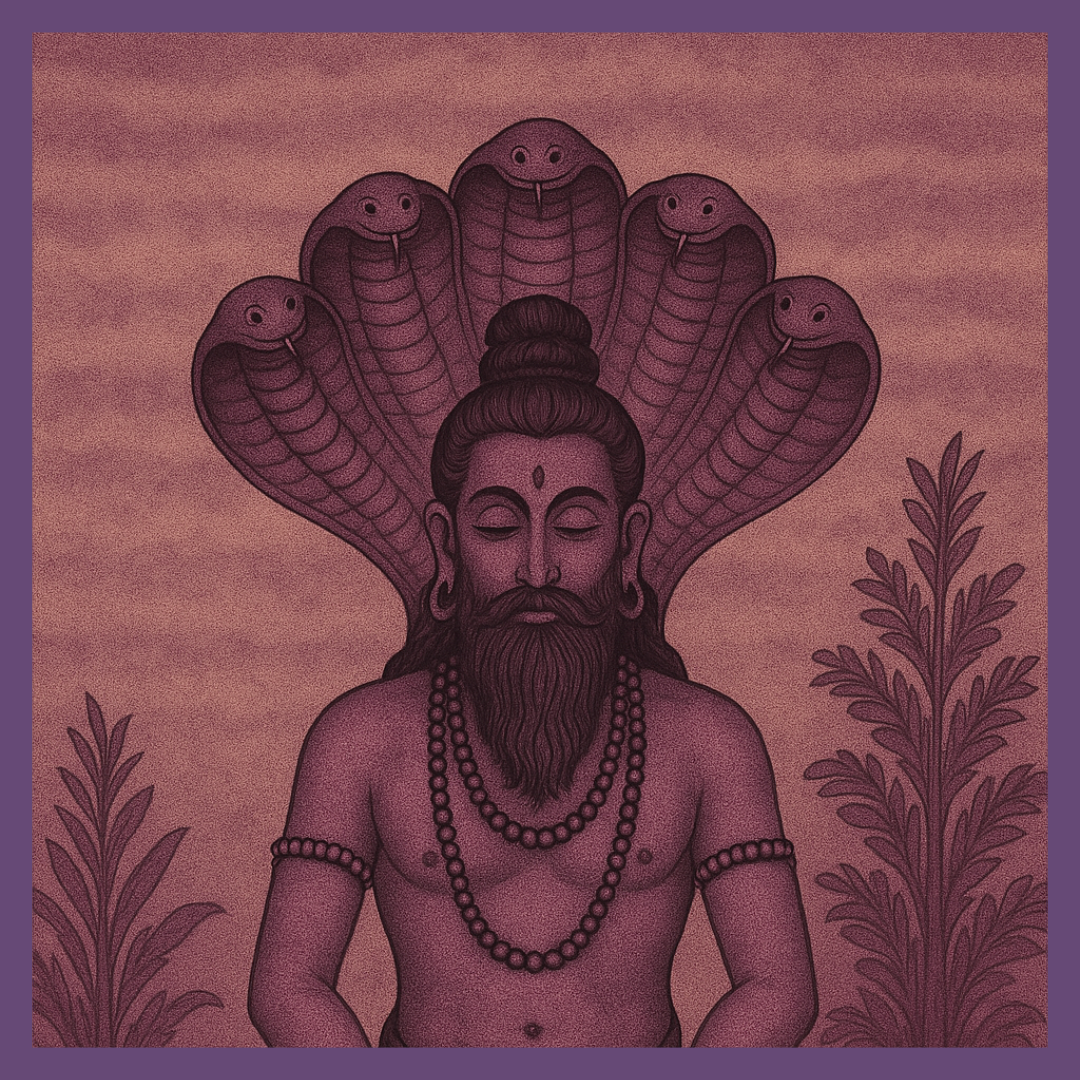
Discover the origins of the Yoga Sutras, the eight limbs of yoga, and the mystical figure of Patanjali — half-human, half-serpent, and the father of classical yoga philosophy.
When we speak about yoga philosophy, the name Patanjali appears again and again — but who was he?
According to Indian tradition, Patanjali was not just a scholar, but a mystical figure, often portrayed as half-human, half-serpent, symbolizing the deep connection between knowledge, transformation, and the coiled kundalini energy. His form reminds us that yoga is not only physical but also energetic and spiritual.
Interestingly, Indian tradition speaks of three Patanjalis:
Some believe these were three separate figures; others say they were one enlightened being contributing to multiple fields of knowledge.
The Yoga Sutras of Patanjali are a collection of 196 short aphorisms, composed around the 2nd century BCE, though some scholars debate the date. These brief verses offer a systematic framework for understanding the purpose of yoga, the workings of the mind, and the path to spiritual liberation.
Rather than describing yoga poses, the sutras focus on concentration, ethics, mental discipline, and liberation. They form the foundation of Rāja Yoga, the “royal path” of inner mastery.
Patanjali outlines eight limbs (ashta-anga = eight limbs) of the yogic path. These are not steps to climb in order, but rather limbs of the same spiritual body:
Together, these limbs create a path of inner purification, mental clarity, and spiritual awakening.
In a world where yoga is often reduced to stretching or fitness, returning to Patanjali reminds us of yoga’s deeper roots. His Yoga Sutras are not rules, but invitations: to live ethically, breathe consciously, sit still, and turn inward.
At Yogic Spirits, many of our classes — especially Hatha, philosophy workshops, and our India retreats — draw directly from this classical vision of yoga. We believe that asana is just one expression of yoga, and the true practice begins in the heart and mind.
Patanjali may remain a mysterious figure, but his teachings continue to guide millions across centuries. Whether you chant his name in class or study his verses on your own, he offers us a clear, compassionate path to freedom.